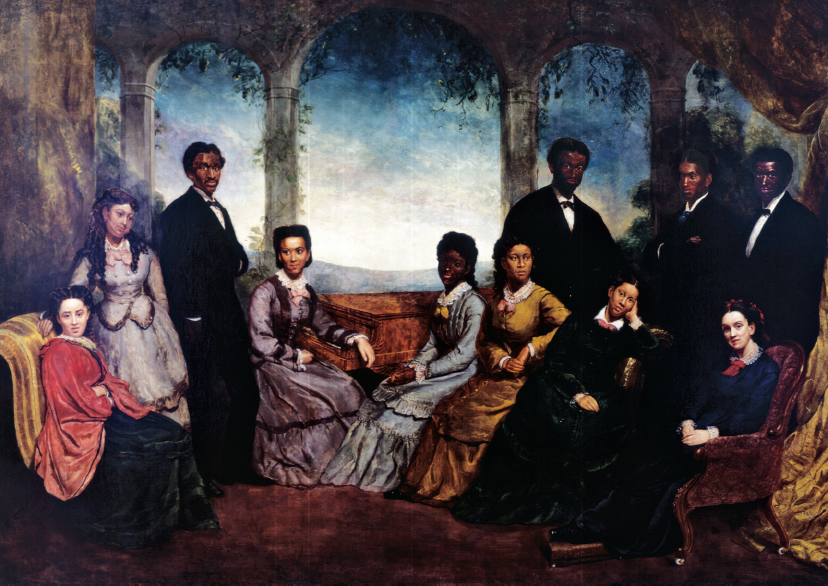America’s History: Printed Page 408
America: A Concise History: Printed Page 373
America’s History: Value Edition: Printed Page 361
National Power and Consolidation
 Fisk University Art Galleries.
Fisk University Art Galleries.
The Civil War increased national authority. Three Republican-sponsored constitutional amendments limited the powers of the states and imposed definitions of citizenship — prohibiting slavery, mandating suffrage for black men, and forbidding state action that denied people equal protection under the law. The U.S. Army remained a significant force, enforcing Reconstruction in the South as late as 1877, while suppressing Indian uprisings and extending national control in the West.
The Civil War created a powerful American state, as the Union government mobilized millions of men and billions of dollars. It created a modern fiscal system, an elaborate network of national banks, and — for the first time in American history — a significant national bureaucracy. Inspired by Whig ideology, Republican-run Congresses intervened forcefully to integrate the national economy and promote industrialization, granting subsidies to railroad companies, protecting industries and workers through protective tariffs, and distributing western lands to farmers and cattlemen. In the 1850s and 1860s, U.S. officials also intervened aggressively in Japan and then built coaling stations that enabled U.S. steamships to carry products to Asia and bring Chinese workers to the United States. The nation’s dynamic postwar economy had set the nation on a course toward global power. Chapters 15 and 16 discuss all of these events.